|
Why do we procrastinate?
Have you ever caught yourself spending hours watching TikTok videos or scrolling through Instagram reels, despite your intention to stop procrastinating on your tasks? Lately, there has been a lot of talk about the inability of young people to face their responsibilities, resulting in constant delay. Procrastination happens to many of us. Instead of sitting down and tackling our emails, it seems more interesting and important to clean out our inbox from unnecessary messages or maybe tidy up our room. But why does this happen to us? Research suggests that several factors contribute to procrastination, including poor time management, laziness, and a lack of self-control. However, when stated like this, it sounds a bit harsh and can make many of us feel bad, adding to the guilt. To start with, as in everything, it's important not to be too hard on ourselves. As The Guardian writes, 80% of young people procrastinate, and even 50% do it frequently. So, if you find yourself in this situation, you're not alone, and don't be overly self-critical. The essence of procrastination is that the immediate gratification it brings outweighs the long-term benefits. In other words, procrastination, or odlaganje, is not a time management problem but an emotion regulation problem. So, how can we influence our emotions? Make your small victories feel significant and be proud of yourself. The perceived benefit of completing a challenging task should outweigh the immediate discomfort of tackling it. Break tasks into smaller steps. The feeling of facing a huge task can lead us to overthink and underestimate our abilities. Breaking tasks into smaller, achievable steps makes it easier to start and finish them. Create a schedule and set goals - and share them with others. It may sound odd, but based on research, our brain;s reward system is highly responsive to our social status. There is a greater tendency for individuals to follow through on tasks when they have shared them with others. It's also a great way to visualize our responsibilities. Recognize and confront sources of stress. Firstly, it's important to recognize the signs of stress that can contribute to procrastination. Then, adopt self-regulation strategies such as deep breathing, meditation, exercise, or yoga. When you identify the source of stress, try to confront and resolve it. Often, we're not aware of what is bothering us, and we end up procrastinating on activities that are not directly related to our underlying mood. Collaborate with others and be kind to yourself. Of course, it's not possible to solve such a habit by just reading an internet article or having one conversation. Try talking to people who may face similar challenges. Collaborative work can help you stay motivated and accountable. Next time you have an exam and cant find the motivation to study alone in your room, find company and create a productive working atmosphere. And most importantly, be kind to yourself! The fact that even I procrastinated writing this text proves that delaying tasks happens to many of us. But know that it can be overcome with a little effort, motivation... and maybe a few episodes of your favorite series. In any case, don't worry, procrastinating on tasks is quite normal as long as you eventually reach your goal and consistently work on improving this habit.
0 Comments
Artificial intelligence (AI) is currently one of the most popular terms in the world of technology and startups, and for good reason. In recent years, there have been many innovations and advances in AI that were previously used only in the realm of science fiction. Artificial intelligence refers to the ability of a computer, robot, or software to perform tasks that are typically associated with intelligent beings and involves simulating human intelligence through machines that are programmed to think and make decisions like humans.
To apply this powerful technology and solve certain problems, it is necessary to have large amounts of high-quality data, advanced algorithms and models, powerful computing infrastructure, as well as skilled scientists and engineers. The 21st century is characterized by the availability and low cost of all these resources. The concept of artificial intelligence is not new, and the first successful program based on AI was written in the 1950s. However, exponential growth began around 2010, doubling every six months thereafter. One AI tool that has found widespread use in everyday life is the virtual assistant called ChatGPT. It was developed by the American research laboratory "OpenAI" and has been available since November 2022. Today, there is almost no one who has not heard of or used ChatGPT, and the fact that it took only five days for the number of users to surpass one million tells us that it is a technology that is widely accepted worldwide. GPT-3 (Generative Pretrained Transformer 3) is the most advanced autoregressive language model used to generate text similar to humans. This is one of the largest and most powerful language processing models to date, and over $10 billion was spent on its training. ChatGPT can answer questions, solve complex and programming problems, write essays, make suggestions, and much more. However, the model is far from perfect. Some of its limitations include:
We are witnessing that this technology will continue to improve, become “smarter” and more accessible. Interestingly, a team from Stanford trained a similar language model (Stanford Alpaca) for less than $600. The initial estimate was that such models would be trainable at low cost only in 2030. Therefore, what was supposed to happen in eight years happened in just five weeks. With fierce competition from other technological giants (Apple, Google, Amazon, Baidu) who are developing their models, as well as a bunch of startups dealing with artificial intelligence, we can expect AI to have an increasingly significant role in our lives in the future. Industry experts and companies investing in technology say that AI will not completely replace humans in the near future, but jobs will be transformed as artificial intelligence becomes more accessible. For this reason, it is necessary to improve knowledge and learn about the possibilities that such models offer. Although artificial intelligence offers many benefits, it is necessary to be mindful of its potential negative impact on society and the environment. Therefore, it is important that the development of artificial intelligence is guided by ethical principles and that the technology is used in a way that will bring the greatest benefit to society as a whole. Author: Petar Damnjanović 1. Introduction
One of the main features of the new millennium are topics related to the environment and climate change. Even though there are still theories that climate change does not exist, and that the situation should not be taken seriously, at the end of the last century, the international community finally began to give importance to this phenomenon, seeing the urgency and necessity for changes in this field. However, even after many decades, regulations and international agreements, the major powers are abusing their position to violate the agreements and acts that they willingly acceded to, creating catastrophic consequences for climate change. One of such potential abuses is the willow project. 2. What is the Willow project? ConocoPhillips’ Willow Project is a massive and decades long oil drilling venture on Alaska’s North Slope that has been exploring and drilling for oil in Alaska for years. Willow was proposed by ConocoPhillips and originally approved by the Trump administration in 2020, originally approved to construct five drill pads, but later reduced to three. The area where the project is planned holds up to 600 million barrels of oil. That oil would take years to reach the market since the project has yet to be constructed and now that the Biden administration has given the Willow project the green light, construction can begin. However, it is unclear exactly when that will happen, in large part due to impending legal challenges. Earthjustice, an environmental law group, is expected to file a complaint against the project soon and will likely seek an injunction to try to block the project from going forward. 3. Negative impact on the climate change It is estimated that this project will emit 239 million metric tons of carbon emissions into the atmosphere over the next several decades, which would be equivalent to the emissions of 64 coal-fired US power plants. Therefore, there is a good reason why environmental organizations have named this project a “carbon bomb”. In contrast to that, President of the United States has obliged to cut greenhouse gas emissions in half by 2030 compared to 2005 with the goal of achieving a net zero emissions economy by no later than 2050. Therefore, by approving the project, this plan would be highly jeopardized. Activists also state that Willow project is making no sense for the health of the Arctic or the planet, and they are supported both by local communities and law firms who already filed suits in regard with this case. One of their claims is also potential climate effects to the threatened species, including polar bears that reside in the region where the Willow Project would be constructed, stating that project violates several federal laws, including the National Environmental Policy Act (NEPA) and the Endangered Species Act (ESA). 4. Can the Willow project be a good thing? While some focus on the negative aspects, others see this project as a great opportunity. Some Senators of U.S. congress can feel Alaska’s future brightening because of it. These thoughts come mainly from the fact that this project will create thousands of new jobs, also generating billions of dollars in new revenues, improving quality of life on the North Slope and across the state. To understand this point of view, one has to know that Alaska’s economy is heavily dependent on oil extraction. Nearly 85% of the state budget comes from oil revenues. For that reason, one can understand the potential importance of this project especially for the state of Alaska, which is currently pumping less than a quarter of the oil it was moving in the 1980s. Also, it is important to add that, even if the President’s administration wanted to react, their hands are potentially tied due to existing and valid leases in the area with ConocoPhillips. They determined that legally, courts wouldn’t have allowed them to fully reject or drastically reduce the project. If they had pursued those options, they could have faced steep fines in addition to legal action from ConocoPhillips. 5. Do we have a solution? Environmental groups and ConocoPhillips are each racing against the clock. Construction on Willow can only be done during the winter season because it needs ice roads to build the rest of the oil project’s infrastructure. If environmental groups secure an injunction before then to stop or delay the project, it could delay construction for at least a year. And since the project needs to be fully constructed before the oil can be produced, it could take years for the oil pumped out of Willow to reach the market. How can you help? Immediately after the Willow project became known to the public, activists created a petition on the change.org website called "Say no to the Willow project". This petition has more than 5 million signatures so far. If this article convinced you that Willow project can be fatal for the environment and future of our planet, you can sign the petition at this link: https://www.change.org/p/joseph-r-biden-biden-administration-and-conocophillips-say-no-to-the-willow-project. "How many steps have you collected so far?"
I remember that this was the main thing that my friends and I discussed about for a few months in 2019. I don't even think I've ever tried so hard to walk and move around in my life as I did then. It was great to see how the steps taken using the app turn into money that "someone out there" invests where it should be invested. If you haven't already, get to know NURDOR - "We make life easier for children with cancer and their closest by providing practical, emotional and material support. We are a national association of parents of children with cancer, made up of parents, doctors, medical staff and all people of good will", they say in the About us section of the official website. Parents whose children were treated for malignant diseases 20 years ago came up with an idea of founding NURDOR, as our interlocutor and Legal and PR advisor at NURDOR, Tamara Klaric, says, with one goal - "so that no family has to go through it the way they had to: by themselves." Today, NURDOR consists of the board of directors - the founding parents, and in addition to them, eleven other employees in Belgrade, Niš and Novi Sad. When asked how they succeeded and what she considers the greatest value of NURDOR, Tamara says - togetherness. Tamara states that the biggest and most successful project of NURDOR so far is the design, construction and equipping of the new children's hemato-oncology hospital in Niš. It is equipped with the most modern medical equipment, each room has its own bathroom and a bed for the parent, and in addition, what is perhaps the most important, there is the possibility of applying humane therapy - children receive chemotherapy while they play. "Today, it is the most modern institution for this purpose in the Balkans, built entirely thanks to donations from companies and citizens." In 2018, NURDOR completed and donated the hospital to the Niš Clinical Center. She also states that almost 1,000 families have passed through the organization in various activities so far. The latest and currently the largest project for the construction of the Parents' House in Belgrade was launched, as she says, precisely because there is not enough capacity to accommodate families in Belgrade, which is the largest therapeutic and diagnostic center in Serbia and where the majority of children actually come to be treated. . "This will be the largest Parent's House in Serbia, which will enable every family that comes to Belgrade for treatment to have free and adequate accommodation for as long as the treatment lasts." As the biggest obstacles that the organization, as well as the families they are in contact with, encounter, she states that they are mainly of an administrative and legal nature, which, especially for families, represent "a completely unnecessary additional burden on the already unimaginably difficult situation in which they find themselves." . However, in most cases, they manage to cope with the bureaucratic system, ,,which is so sluggish and slow that it often seems to be working against itself.” On the initiative of NURDOR, in 2019, after six years of fight, the law on health insurance was amended and parents of seriously ill children were given the right to sick leave for the entire duration of treatment with 100 percent of salary compensation, while the previous practice was only four months of sick leave with 60 percent of the fee. They also managed to fight for the children's right to free rehabilitation after treatment. However, she states that the lack of a pediatric cancer registry in Serbia, an information system for data analysis, which would greatly help the monitoring of all data, the number of patients and those cured, short-term and long-term consequences of treatment and therapy, etc., remains an unresolved problem. Although NURDOR has been advocating for this for many years without results, "We will continue this fight, with the never-forsaken hope that the institutions will recognize that what we are advocating for is only a change for the better." For all of us.", says Tamara. When asked if she thinks that their actions reach a "sufficient" number of people and if it is difficult to reach them today, she answered that it can always be better and that it would be great if every adult in Serbia knew about NURDOR, not because of the increase popularity, but because that way we would get a sanctified society. ,,...I am sure that you will never, in any era that humanity will go through, find a man who does not feel good when he does Good. You just have to offer people that possibility, devise a way and give them the opportunity to see that it really makes sense. If we succeed in that - then Good becomes power." I also agree with Tamara. Everyone around me, myself included, was collecting steps and feeling good. Our interlocutor describes NURDOR in one sentence with a quote from Margaret Maed: ,,Never underestimate the possibility that a small group of dedicated people can change the world. After all, they are the only ones who have done it so far." However, I would like to end this story about NURDOR, these endlessly inspiring people and their selfless goal and importance, as Tamara says and tells, with a short anecdote: "One little princess, who celebrated her third birthday in the NURDOR parent's house, after a successful operation and treatment, returned to her city with her parents. After a few days, mom noticed that she was sad and asked what was wrong with her, if she was in pain, and she replied: "I would like to go home to Belgrade." Teodora Mašković Đeri, the Studenica Foundation scholar and second-year psychology student at the Faculty of Philosophy at the University of Belgrade, had the opportunity to participate live in the seventh European Psychoanalytic Conference For University Students in Brussels, which was about repetition and transformation in modern psychoanalysis. She listened to various lectures and participated in two-panel discussions, one about the reflection of the body-mind relationship, and the other about the transgenerational repetition in children. She decided to share her experience with us.
"Participating in an event like this is priceless and I am very grateful and honoured to be invited to listen and learn from truly exceptional experts who come from all over the world and discuss psychoanalytic therapy with them. I believe that it is very important to become familiar with the principles of modern psychoanalysis and to break the prejudices that exist regarding therapy. This conference expanded my knowledge about therapy, which is a very complex process, and encouraged me to think about training for a therapist in the future", says our scholar Teodora. She points out that she learned a lot about the human psyche from following lectures that were about transgenerational trauma, the modern interpretation of dreams, the influence of events from the past on the present, psychoanalytic therapy for children and brain activity during therapy. In addition, she met and became friends with the participants of the conference - foreign students of psychology and medicine who are also in education for psychoanalytic therapy, with whom she had very rich discussions after the lectures. Next year, she will also be one of the participants at this conference. Our scholarship holder Teodora would like to point out the importance of organizing such projects for young people that deal with mental health topics and invites all young people to attend such conferences and similar projects. Erasmus Student Network Serbia is a non-governmental organization, a part of the Erasmus Student Network, the largest student association in Europe, which is present in more than 40 countries. ESN Serbia itself currently unites 3 sections from the largest cities in the country: Belgrade, Novi Sad and Niš. ESN Serbia is run by the National Board, which consists of three voluntary positions - President, Vice President, National Representative, whose work is supported by the National Communication Department, Web Project Administrator, HR Coordinator, and Research Coordinator. ESN (Erasmus Student Network Novi Sad) is working to create a more mobile and flexible educational environment through student exchange, as well as providing that intercultural feeling at home. In addition to providing all kinds of assistance to exchange students, ESN Novi Sad provides many opportunities for volunteers. The goals of this organization are: promoting the social and cultural integration of international students; promoting interculturality and diversity; promoting student mobility and accessibility; motivating and preparing domestic students for mobility and studying abroad; providing intercultural experience to those students who do not study abroad, but volunteer in the ESN local organization and promoting voluntary and joint activities. The experiences shared by the exchange students contributed to me gaining a better insight into what student exchanges look like and how to prepare in advance for my future exchange. Communication between exchange students and volunteers is also at a high level. I can truly say that once I visit a country, I will be able to visit some of the friends I have made here, and vice versa ESN encourages students to gain international experience by going on an exchange, but also by volunteering in a local ESN organization and thus gaining insight into different cultures. The activities organized in the local sections are numerous and relate to cultural and social events such as excursions and trips, competitions and games, movie nights, gahterings for getting to know each other, language cafes, Erasmus plus chat, parties and various cultural and artistic festivals and humanitarian events.
In half a year of volunteering at ESN, I progressed from an active member to application for event coordinator and planned application for coordinator, ie. ESN Communications Manager. The experience I gained is significant to me in many fields. I developed my communication and organizational skills, as well as other soft skills. I perfected my knowledge of foreign languages and volunteering served as a practice. The role of volunteers is manifold, so I had the opportunity to be a guide, event organizer, lecturer and promoter. Cooperation with volunteers has always been collegial, but also friendly. Working in a team is very important for further career advancement, which is why I think that volunteering in organizations of this type is a great opportunity for students. The experiences shared by the exchange students contributed to me gaining a better insight into what student exchanges look like and how to prepare in advance for my future exchange. Communication between exchange students and volunteers is also at a high level. I can truly say that once I visit a country, I will be able to visit some of the friends I have made here, and vice versa. All the events we had with foreign students gave us a different perspective of Novi Sad. By looking at Novi Sad from another angle, we broke a monotony of everyday life and got closer through various activities, cultural, entertainment and artistic. This intercultural environment is important not only to make exchange students feel accepted, but also to make us all feel united. The acquaintances and friends I gained showed me that there are no boundaries that can separate people if they understand each other enough. Volunteering creates just that sense of connection, regardless of different backgrounds and borders between countries. Like I said, those boundaries are being erased. What we are left with are the people we return to, the encounters we remember, and those memories never fade. I am convinced that the meetings do not happen by chance ... Teodora Šiklošić After spending two semesters at Charles University in Prague, on the Erasmus + student exchange program, I wholeheartedly recommend all students to seize the opportunity and spend several months studying abroad. Student exchanges are an unforgettable experience that will broaden your horizons and enable you to learn first-hand what it looks like to live and study outside your country at minimal cost. I will use this text to share my experience of the entire process of going on an exchange abroad. I hope that it will be helpful to those who want to apply for some of the exchange programs, but I also hope to encourage those who have not thought about exchanges to do so. University selection and application process The first step is to research the opportunities for student exchanges at your faculty. In our country, Erasmus+ is currently the most popular exchange program and almost all faculties in Serbia participate in it. Through the Erasmus + program, students can spend a semester or two in one of the countries of the European Union. There is also the CEEPUS program for the countries of the region and Central European countries, as well as some other less popular programs. For the Erasmus+ program, there is a website mobion.bg.ac.rs you can use to research which universities there is an open call for, at least 6 months in advance. At the Faculty of Political Sciences, where I study, we have a coordinator for exchange programs who helped me a lot with preparing the application and choosing the subjects that will be recognized as substitutes. Some faculties have Erasmus+ coordinators, but unfortunately not all of them do. The application consists of motivation letter, “learning agreement,” transcript of grades, certificate of English language proficiency, professor’s recommendation, and some other documents. All that needs to be obtained on time, and something needs to be translated by a court interpreter. The application should be sent via the MobiON site, the instructions on the site are clear and the application is not overly complicated. You will find out if you were accepted a few months before the start of the exchange. I was informed that at the beginning of November, and the semester started in mid February, so you will have enough time to prepare, get a visa and organize the trip. The whole process depends on the university and the country you are going to. In my case, they sent us documents from Charles University in time to get a Czech visa before traveling. Visas are required for stays in the European Union longer than 3 months for citizens of the Republic of Serbia. Accommodation: apartment or dormitory? Before you go on an exchange, you have to decide where you will live. The main question is: apartment or dormitory? When it comes to Prague, the rooms in the apartments were three to four times more expensive than the dormitory, so my friends from faculty and I decided to take the dormitory. This turned out to be a great decision, because the dormitory is irreplaceable when it comes to meeting new people and socializing with students from all over the world. I met a lot of new people in the dorm, some of whom became my closest friends. I am still in contact with most of them, and we are planning a reunion in Prague this summer. Although living in an apartment is more comfortable, it cannot provide such an experience after all, so my recommendation is definitely a dormitory. From preparing breakfast in the morning in the shared kitchen to partying in the rooms in the evening — dormitories are great accommodation when you go on an exchange. The bonus is that at most universities that have their own dormitories, exchange coordinators organize and book accommodation for you, so you don't have to go through the process of looking for accommodation. My friend from college and I were allowed to be in the room together, so there is that option if you go on an exchange with another or a friend. The application consists of motivation letter, “learning agreement,” transcript of grades, certificate of English language proficiency, professor’s recommendation, and some other documents. All that needs to be obtained on time, and something needs to be translated by a court interpreter. The application should be sent via the MobiON site, the instructions on the site are clear and the application is not overly complicated. Studying: recognition of subjects and differences in systems
Speaking of studying itselft, it all depends on the faculty. I was very lucky with both faculties, because the FPN did not require the syllabuses of subjects in Prague to match to a large extent in order to recognize my grades and transfer the ECTS. However, some colleges are much stricter in this regard, so you may have to take subjects that you missed once you return from the exchange. The application also includes a document called the Learning Agreement in which you suggest which subjects from the receiving faculty would replace the subjects you are missing that semester at your faculty. However, some subjects may not be available once you arrive there, so you have a deadline to replace them, apply for others, and get approval from your college. The teaching system is different to the one in our country. At the Faculty of Social Sciences of Charles University, lectures usually lasted an hour and a half, student participation was important and they were held in small groups. I especially liked that difference in relation to the lectures in our country, because it gives the professor more opportunities to communicate with students, and students can more easily get involved in the discussion. There were no practical classes in the sense in which they are organized in our country — lectures and practical classes were one and the same. Some lectures were held in blocks, but in any case, for all the obligations on a weekly basis, it took me less time than at my home faculty. For most of the subjects, I wrote essays or seminar papers, which either carried a large part of the grade or were a substitute for the exam. I didn't spend days studying endless information from hundreds of pages for the exams, like I did for most exams in our country. I prepared for the exams using notes from classes and texts we read before each lecture, so I basically prepared for the exam through continuous work throughout the semester. I must admit that it was difficult for me to get used to the way of working at my faculty again when I returned from the exchange, although there are professors here who implement this "Bologna" principle more than others. On the other hand, although I liked the system at Charles University more, I got the impression that some "difficult" subjects from FPN really provided me with a broad education and knowledge in various fields that I applied in all lectures. That breadth and in-depth study of certain scientific fields is not a feature of the system in which I studied during those two semesters, the subjects are rather conceived as courses. Student life in Prague It is completely different to visit a city for a couple of days as a tourist and live in it. Student exchanges are great because they provide an opportunity to experience life in another city or country for a few months, with the costs covered. The Erasmus+ scholarship I received in Prague was more than enough for all my living expenses. Two years ago, Serbia became a program country in the Erasmus+ framework, which unfortunately means that scholarships are now lower and for the Czech Republic amount to 470 euros per month. However, that is enough if you live in a dormitory and do not overdo it with Uber eats. Information on scholarships for different countries can also be found on the MobiON website. Prague is a great city for students — it has everything students need and a student card offers a lot of different benefits. From discounts on food in many restaurants, all the way to cheaper transportation. Speaking of restaurants, I have to recommend Einstein pizzerias, which are located in several locations in Prague and whose owners, as we have heard, are from our region. Here you can get two meals for the price of one with a student card, and their food is great. We talked to the waiters several times in Serbian, and we also ate excellent ćevapi there. Train and bus tickets with a student discount are very cheap, so you can travel to any place in the Czech Republic for a few euros (100-300 crowns). Of all the places we visited, I liked Češky Krumlov the most, a town in the north of 13,000 inhabitants, 3 hours away from Prague, where you get the impression that you travelled a couple of centuries to the past. Unfortunately, during most of my stay in Prague, there were restrictions due to the corona virus, so I was not able to visit all the places I wanted. When it comes to museums, one you should definitely visit is the National Museum, whose magnificent building is located in the center of Prague. Clementinum is another of my favorite places — the view of the baroque library is like a movie scene, and when you climb the Astronomical tower you will have the whole of Prague at the palm of your hand. Žižkov Tower is one of the symbols of Prague, which can be seen from almost every part of the city. It is located in the neighborhood of the same name and the view from it is breathtaking. When it comes to nightlife, Prague does not lag behind Belgrade. My favorite place to go out was the Lucerna Music Bar, which is located in the palace of the same name, which also contains a cinema and some shops. The whole club looks like a disco from the 80's, and many musicians and DJs often perform here. Of the alternative places, the most interesting is Vzorkovna or as it is popularly called - Dog bar. The districts of Holešovice, Vinohradi and Žižkov are also full of interesting places to go out, as well as to have breakfast and coffee. As everything was closed due to the corona virus for a most of the time I was in Prague, we spent a lot of time walking around the city and visiting different parks. Prague is full of beautiful parks - Letna has a beautiful view of the city, as well as Rieger's Gardens (only from another hill). I would need many more paragraphs to describe all the charms of Prague, so I here I will draw your attention back to the main point of the text — go on a student exchange for at least one semester, it is probably the best decision you can make. Not only will you meet many friends from different countries, but you will also gain an irreplaceable life experience, as well as the academic one. Prague is a great choice for exchange students, but I'm sure you'll have as good a time as I did wherever you go. I loved drawing ever since I was a kid. I created my first more serious work of art that didn’t consist of randomly sketched concentric circles and made me very proud of myself when I was 5 years old. One summer afternoon, I took a white paper and a pencil and this is how I drew a goat in nature. On her left side, there is a flying butterfly bigger than the sun that smiles from the right corner of the paper. I remember being thrilled with my goat who looked like an amateur mix of Picasso and Dali. My mom was fascinated as well – the drawing is still part of our art collection in our corridor. Little did I know that one of the most important symbols in works of art of March Shagal, the artist who later came to be one of my favorites, is precisely a goat. Two and a half months ago, just a few days after my arrival in Milan, I heard that Chagall's works would be exhibited in the Mudec gallery from the 16th of March onwards. I was anxiously waiting for the first wave of crowds to clear up so that I could enjoy the exhibition in peace (although it is never peaceful in Milan) and get to know Chagall more intimately. Little did I know that one of the most important symbols in works of art of March Shagal, the artist who later came to be one of my favorites, is precisely a goat. The exhibition space was in blue, green, and red – recurring colors in Chagall's work. While you are passing from one room to another, chronologically following his artistic and personal development, the background is filled with silent notes of Nach Aktion, a song from the movie Schindler’s list. Family portraits and scenes, religious elements, Jewish suffering in the Second world war, and his wife Bella who was an inspiration for many of his works are just some of the main themes that make Chagall's work memorable and recognizable. It is useless to describe the whole exhibition and each painting, but what is worth describing is the feeling Chagall left on me – love. Love that doesn’t recognize war, famine, poverty. Love that is above anything else, and flies above the destroyed city, love that floats next to the goat playing violin because only love can do such a thing. Love for human beings and nature as the omnipresent motif and guidance in life. Cliche, you might say, but you cannot escape its truth. Very few artists can actually impart such a pure and ingenuine thought about love and happiness and this is where Shagall’s geniality lies. As Anna Scot (Julia Roberts) says in the movie Notting Hill: It feels like how love should be. Happiness isn’t happiness without a violin-playing goat.
The „Migration“ program is held in Novi Sad from February 1 to March 20 and includes more than 300 events and performances by over 100 artists from 42 countries. This program presents migration of the population as an inspiration in art and shows the positive angle of the consequences of migration and their impact on us and our culture. One of the main events of „Migration of Souls“, a unique pavilion of literature, combines visual and performing arts and represents the impact of migration on the individual.
The creation of Novi Sad through migration is the topic of exhibitions in the field of cultural heritage. The concept implies that the past is viewed from the angle of the present so that we can imagine a new future. Prejudices about migration are presented in a humorous way and greet those who have returned to their home town to contribute to society. Famous artists and new hopes of the European art scene through the theme of migration, an inseparable part of European identity, present different types of art e.g. contemporary art. Art and cultural programs will deal with the topic of departures and arrivals, wandering and finding onself, but also existential issues and understanding of migration. Some of the best world and domestic names are performing in Novi Sad, this year's European Capital of Culture. Original Enigma Voices, one of the most famous German music projects, then Anthropoceno, project of members of the French-Argentine band Gotan Project, Barcelona Gipsy balKan Orchestra, Japanese guitarist and singer-songwriter Miyavi, composer and pianist Vasil Hadžimanov, best sevdalinka representative Božo Vrećo, representative of traditional and ethno music scenes Bilja Krstić and Bistrik Orchestra and many other quality performers. All these artists have a common theme - migrations and their positive impact on inspiration, which is reflected in all performances. Watching these inspiring artistic performances, I realized that we are all united and that we and our culture cannot be separated by thousands of kilometers. Migrations help us gain experience and get to know another culture and customs, and that also builds our identity, but the whole identity is also what we carry within us. That is the image that actually represents us. We leave all the values we adopt during migrations to our country when we return permanently or just stay for a while. One has to wander sometimes in order to know oneself and to find oneself in an environment. It is not important where we are, but what we have to offer someone and what we are like as people and as personalities. Anyone who has a desire to move away, or has already moved away, has probably encountered resentment from the environment, and it is this manifestation of "Migration" that gave me hope and support that we should follow our goals and carry the „home“ within us. „Home“ represents everything that makes us ourselves and what we always come back to, without the need to go somewhere physically. A special program that left a strong impression on me is the play „B(j)egunci“ (Fugitives). „B(j)egunci“ is an optimistic theater project which, through examples of migrations of young people, explains the reasons and circumstances of these migrations. „Refugees are a world offered to dive into.“ Characters from the displaced community on the border of Serbia, Croatia and Bosnia are mostly returnees from abroad with different backgrounds. Viewers themselves choose whose story to follow. The stage is shown as a village of 7 houses, with the main square, streets and the nearby forest. Viewers are free to change positions, go outside, go home, return, stay in one position and follow the story of one character from start to finish. They can also follow the stories of different characters. What is special and specific about this play is that we can identify with real stories of young people and hear how they coped with problems during migration. These stories offered me answers to questions and dilemmas when I needed it most. In periods of nostalgia and identity crisis, when we find it difficult to cope in a new environment, we just need to hear that there is always a solution. The most important thing is to accept our personality and strive to be the best possible version of ourselves and always consistent with ourselves, wherever we are. Being a „citizen of the world“ is what I want to achieve when I move away and when I return to contribute to the society that raised me ... to show that everything was worth the effort. Novi Sad is the European Capital of Culture in 2022, and various cultural and educational events and exhibitions are held throughout the year. You can find out more about all the events on the novisad2022.rs website Teodora Šiklošić The scholarship holder of the "Studenica" Foundation, Đorđe Ogrizović, is currently a master's student in Engineering for Sustainable Development at the Department of Engineering at the University of Cambridge student in sustainable development engineering at the Department of Engineering at the University of Cambridge. He decided to share with us interesting details about social life at the University. The university is located in the city of Cambridge, which has about 125 thousand inhabitants, 25,000 of which are students. All students belong to one of the 31 colleges, which have administrative, social and educational roles. Colleges often have the role of dormitories. However, they are much more than places where students can sleep. Special, formal dinners, concerts, exhibitions and other events are often organized. "The college I belong to is called Girton, founded in 1869, and it is the first institution in Great Britain where women were provided with higher education. At the very beginning of the academic year, new students are introduced to the college, relevant services and a tutor - a professor who is in charge of monitoring our progress. The goal of all events at the college is to encourage the exchange of ideas and the establishment of lasting acquaintances", explains Djordje. He points out that Oxford and Cambridge are recognizable for organizing formal dinners that are held several times a week and last about two hours. "On that occasion, specially prepared dishes are served. At Girton College, there will be about a hundred students and several professors at one such evening. At the beginning, the president of the college (Master or Mistress) greeted all those greets and blesses the dinner. During such a gathering, students are expected to be elegantly dressed, with the obligatory wearing of gowns, which differ corresponding to the wearer’s acquired academic degree", says Djordje. Special attention is paid to the holidays, Djordje explained to us what the celebration of Christmas looks like and what the atmosphere is like among people in those days. "This is a national holiday here, regardless of the religion to which the person belongs. Numerous charity concerts were organized. I also attended a big Christmas concert in St. John's Chapel, one of the most famous Christmas services in England. During the service, the St. John's College Boys 'Choir sings, which along with the Vienna Boys' Choir is among the most famous choirs, and the concert / service was broadcast by the BBC. A special service was also organized for the children, where the pastors explained the meaning of Christmas, gifts were distributed, and for those of us who are no longer children, cakes and mulled wine were distributed." Numerous student competitions are also organized in Cambridge, and those related to environmental protection are very common. In one such competition, our scholarship holder achieved an excellent result. "I am very happy to be in the group together with Filip Bosković, a doctoral student at the Department of Physics who led the group, and with Campbell Matthews, a doctoral student from New Zealand. We won the St. John's Climate Crisis Award for the project „The hum of bees is the voice of the garden“: Increasing College's impact on wildlife diversity via pollinator housing." Cambridge also has a number of student associations specializing in various fields. One of them is the Association of Serbian Students, which consists of about thirty students, including Djordje. They carefully nurture the tradition.
"Recently, we organized the celebration of St. Sava's Day, preparing a feast cake and wheat, and I had the opportunity to hold a solemn speech on the occasion of this our biggest holiday", Ogrizovic proudly points out. Learning is better when it is enriched with an active social life, and that is one of the characteristics of Cambridge. "Our students come to the University of Cambridge every year, and here they have the opportunity to improve and advance, and it is especially nice when those who left Serbia for education decide to return. However, this often depends on a number of circumstances, not just the good will of the graduates. However, as Mihajlo Pupin, who also studied at Cambridge, said „Where there is a will, there is also skill!", concludes Djordje Ogrizovic. |
AuthorFellows of Studenicca Foundation Archives
June 2024
Categories |
OUR WORK |
ABOUT US |
|


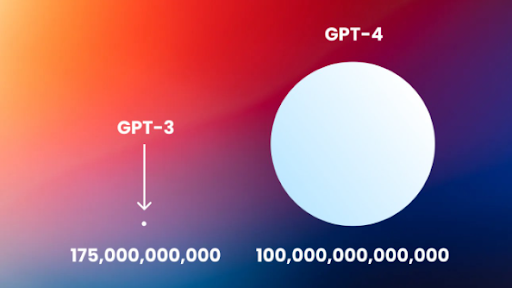
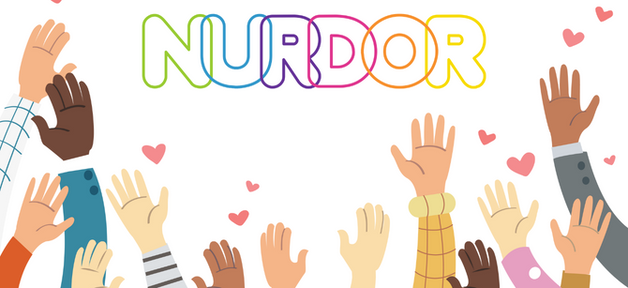
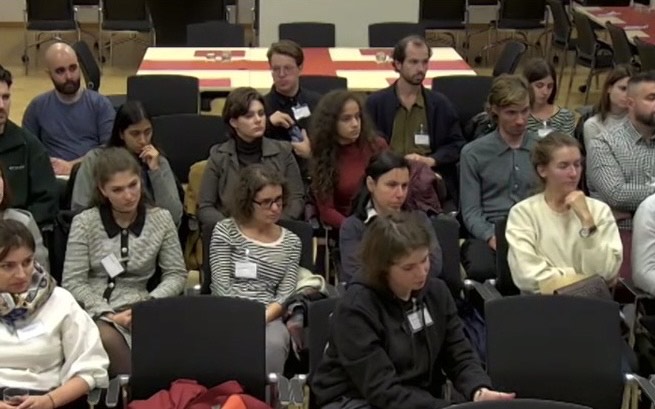
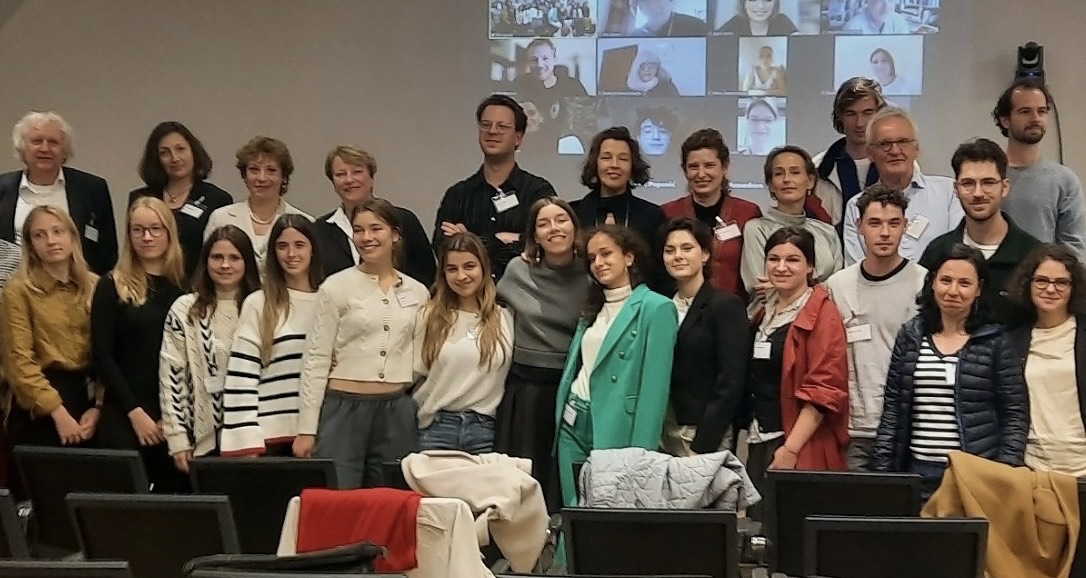
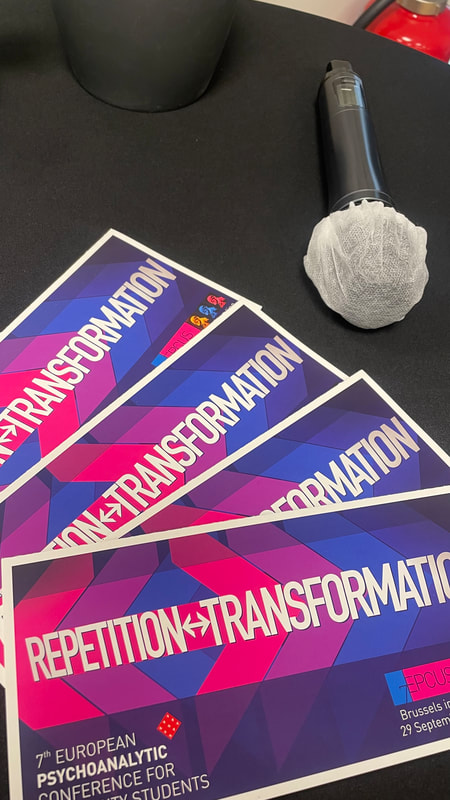
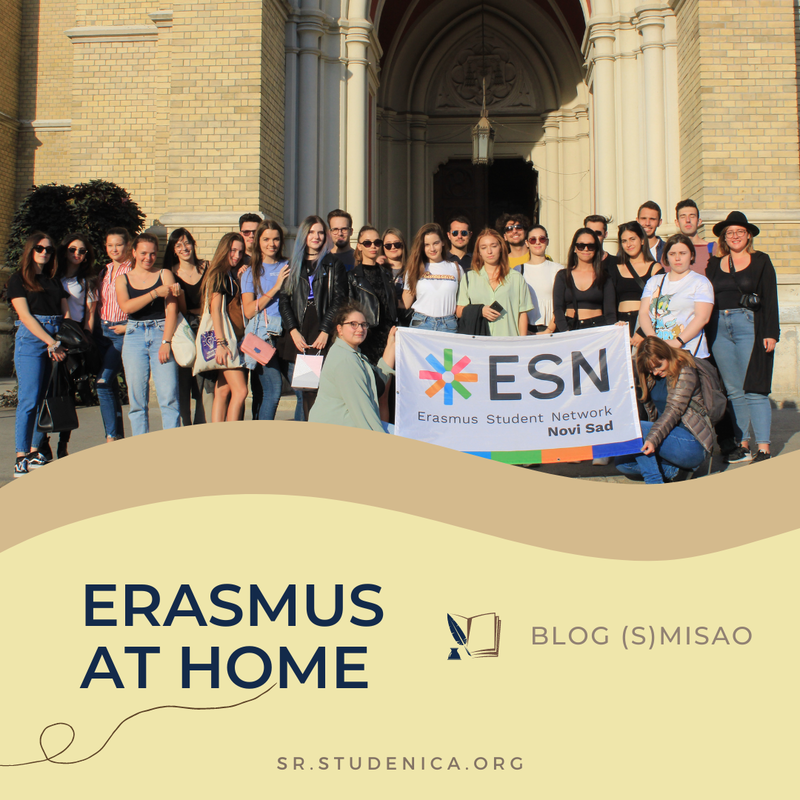
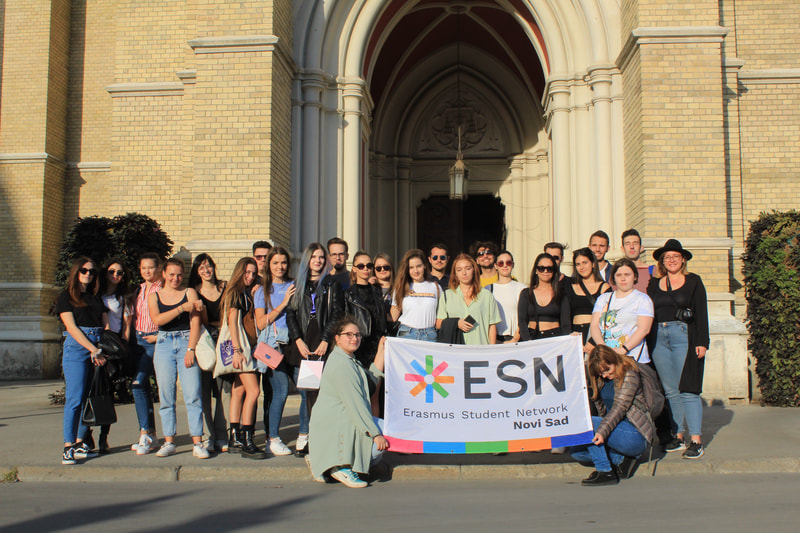
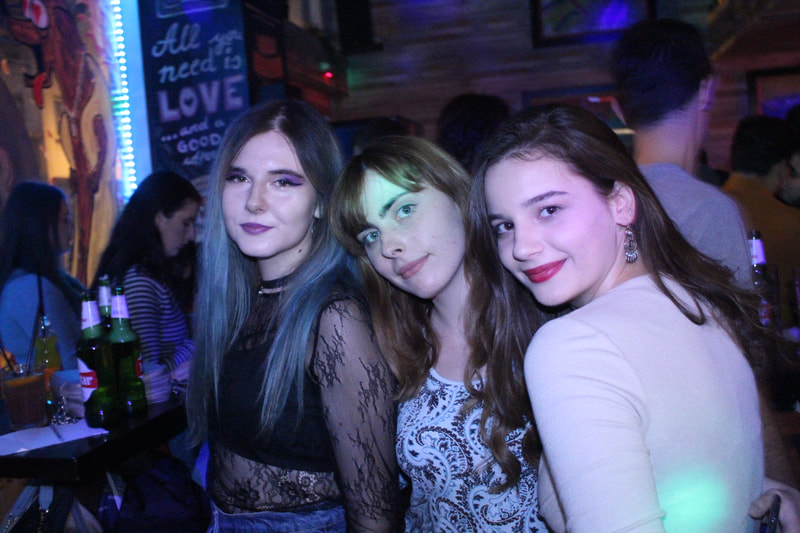
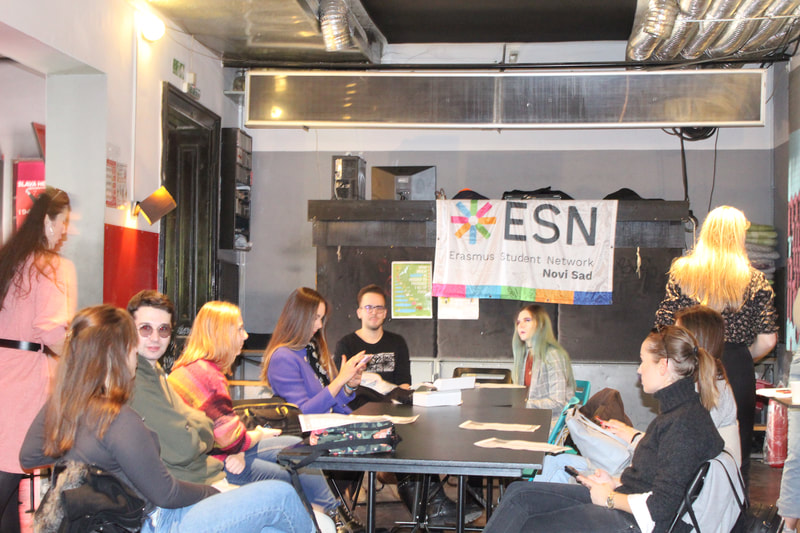

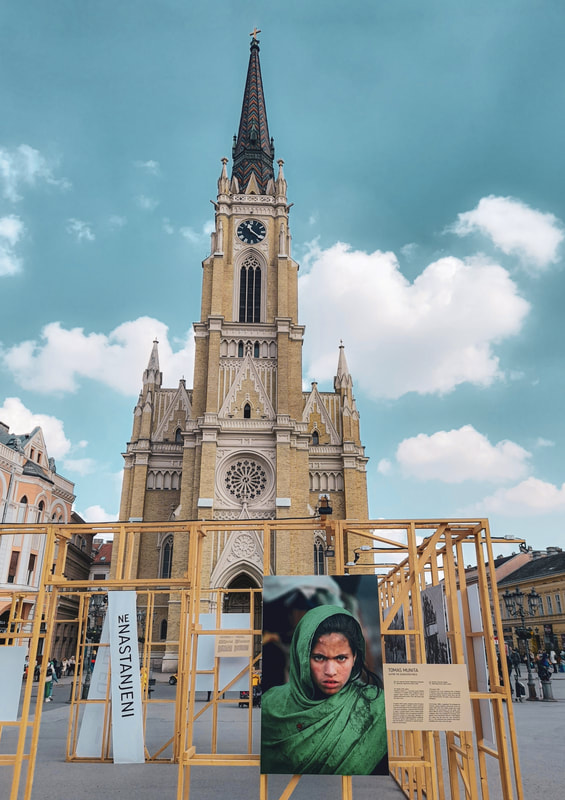
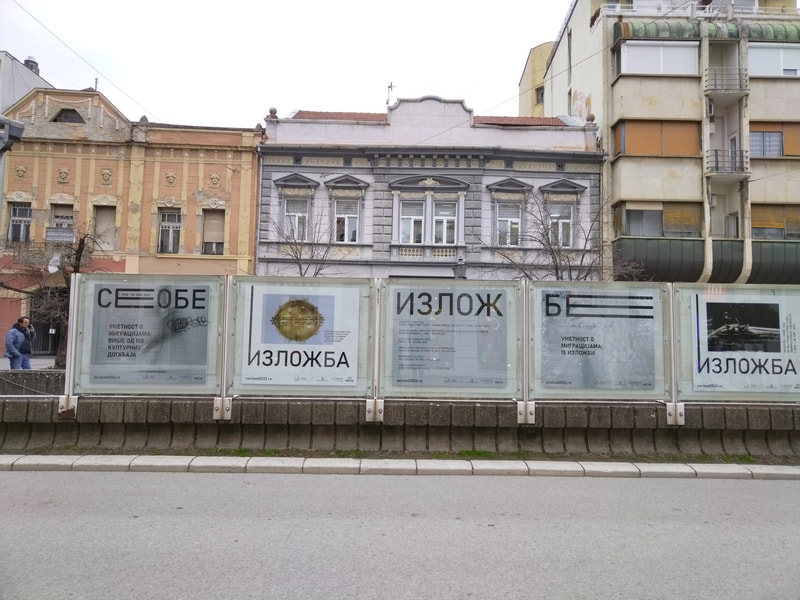
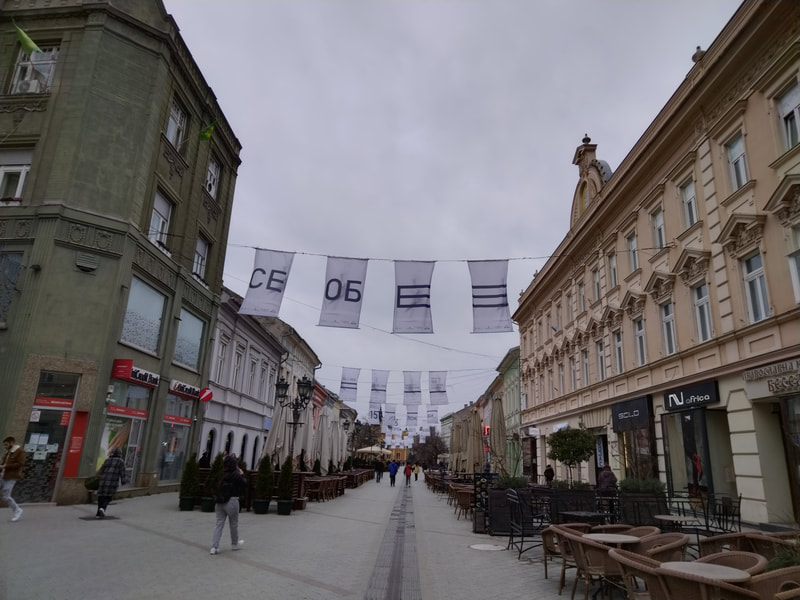
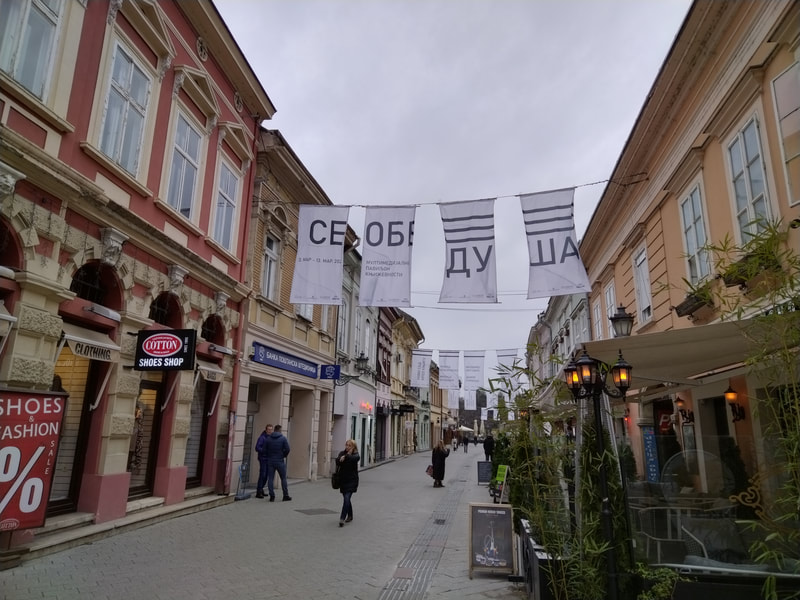

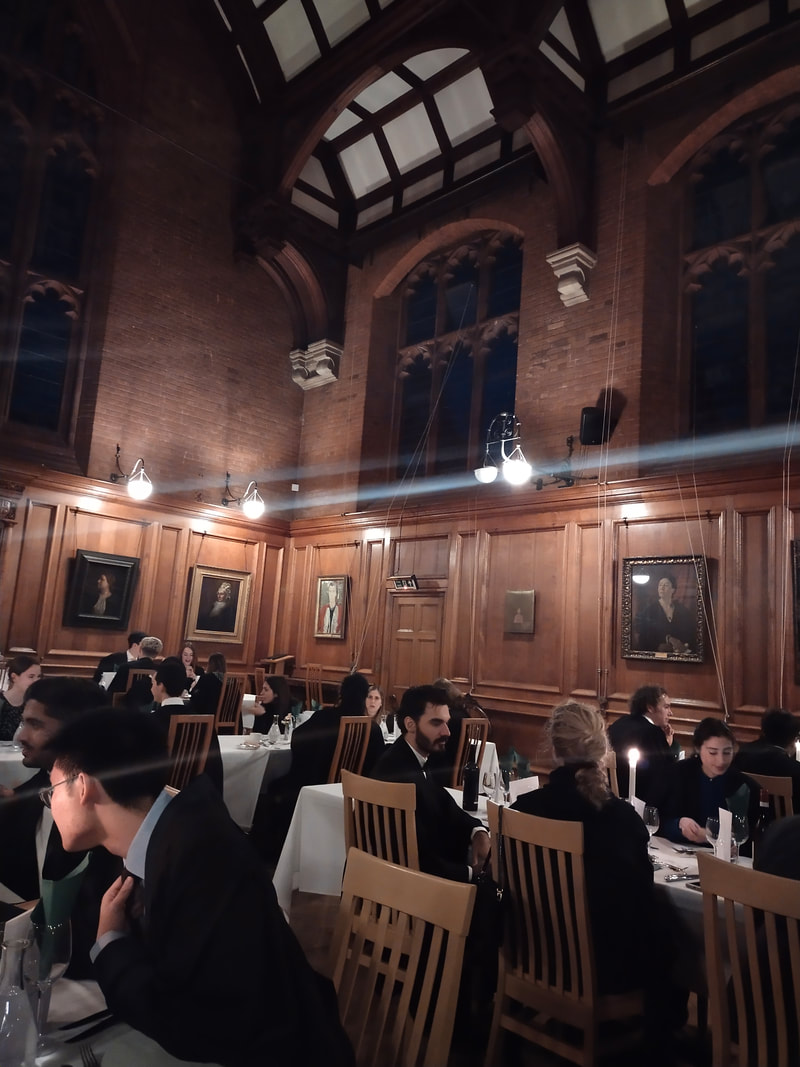
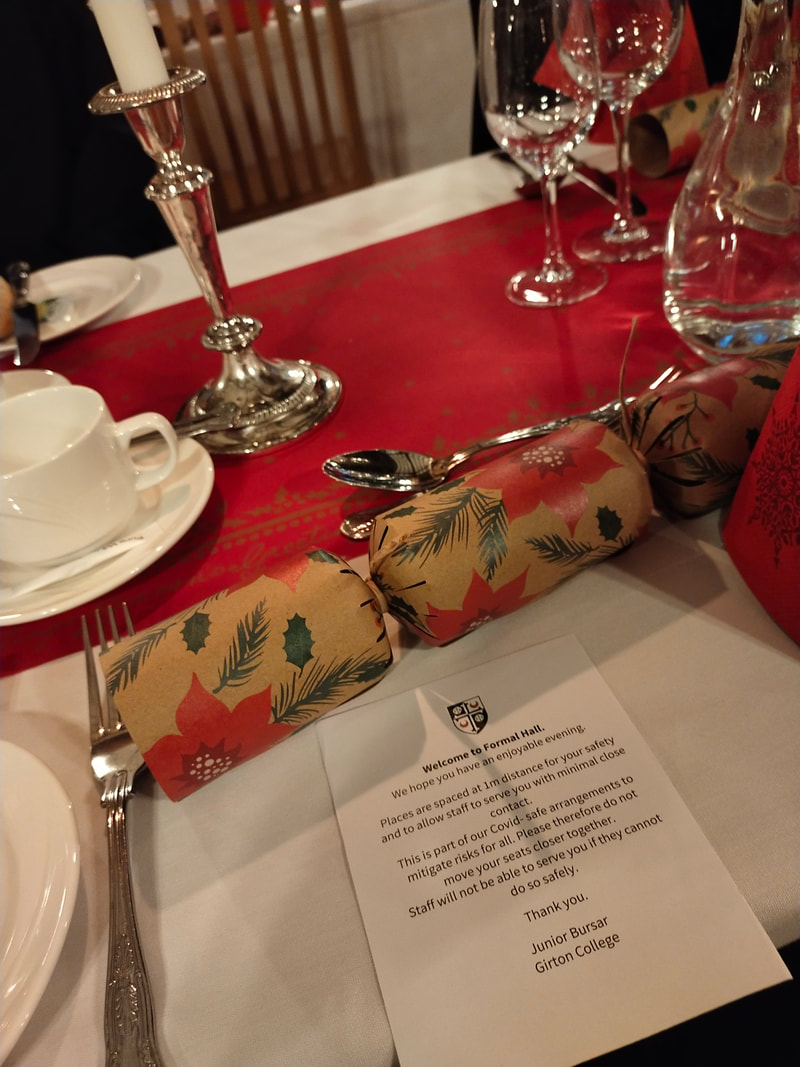
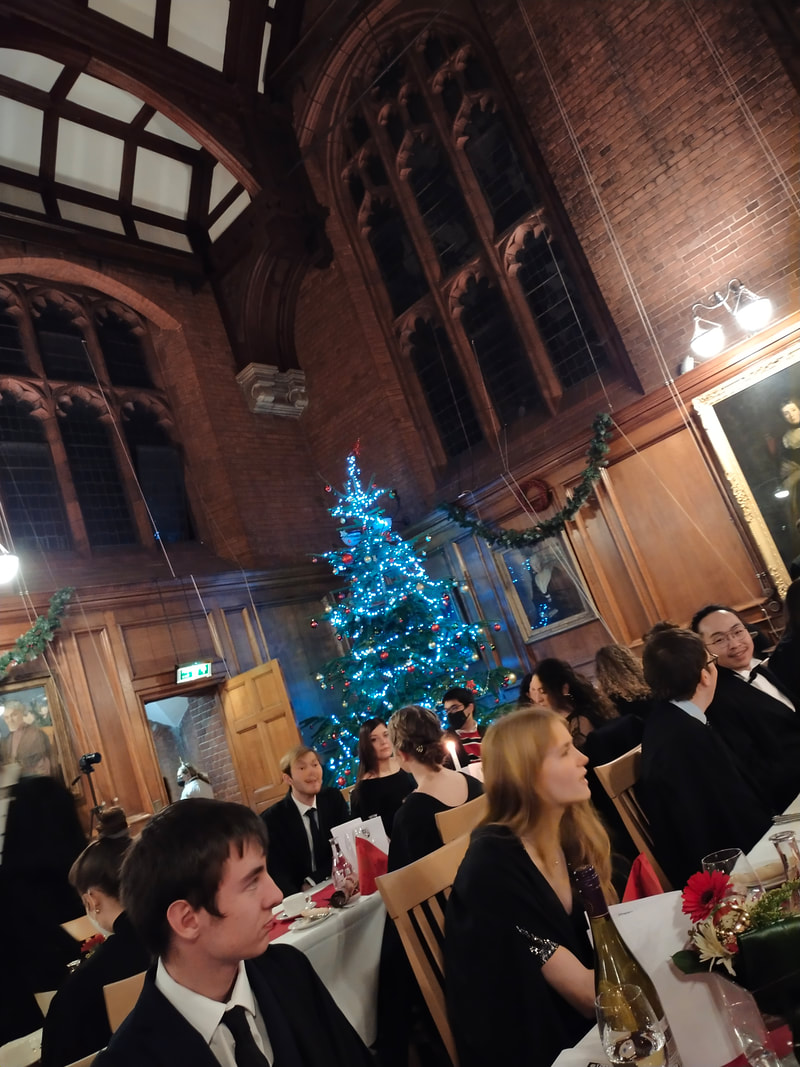
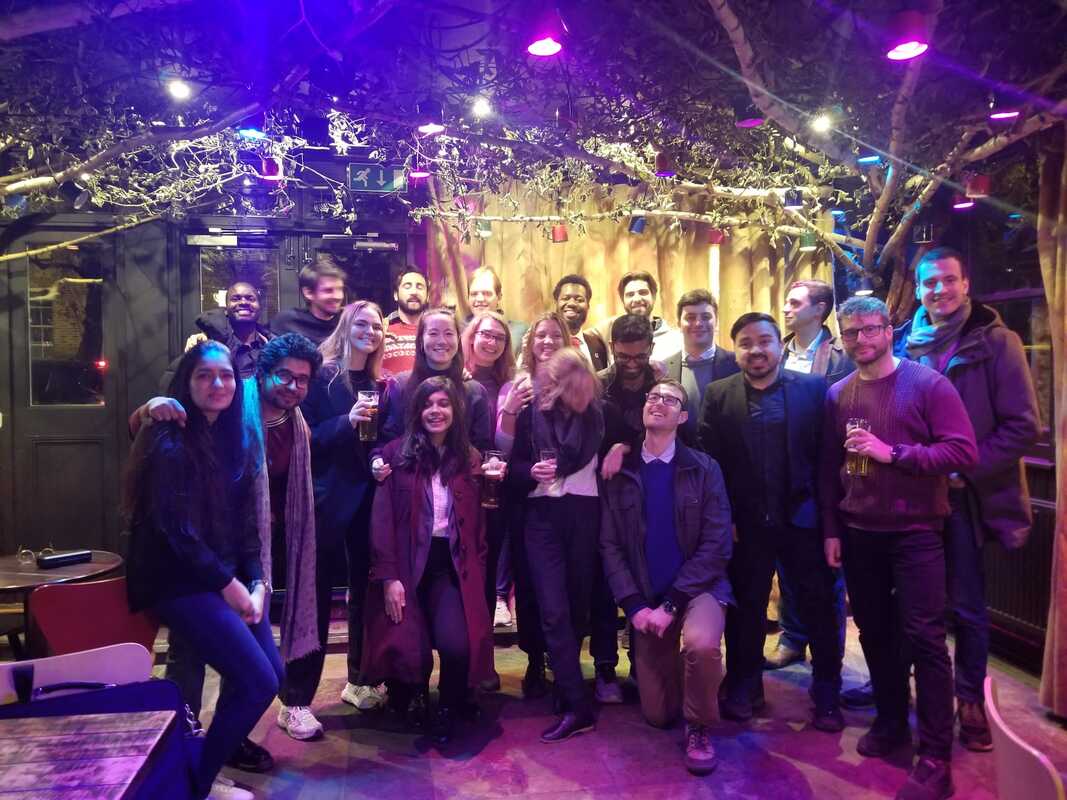









 RSS Feed
RSS Feed
